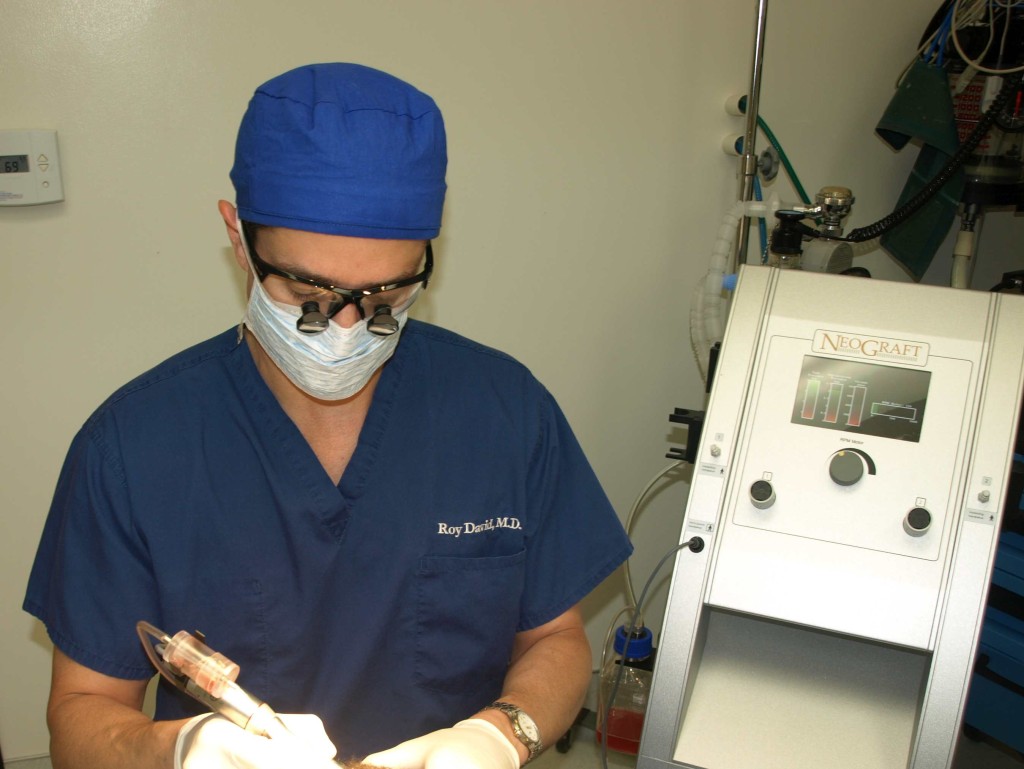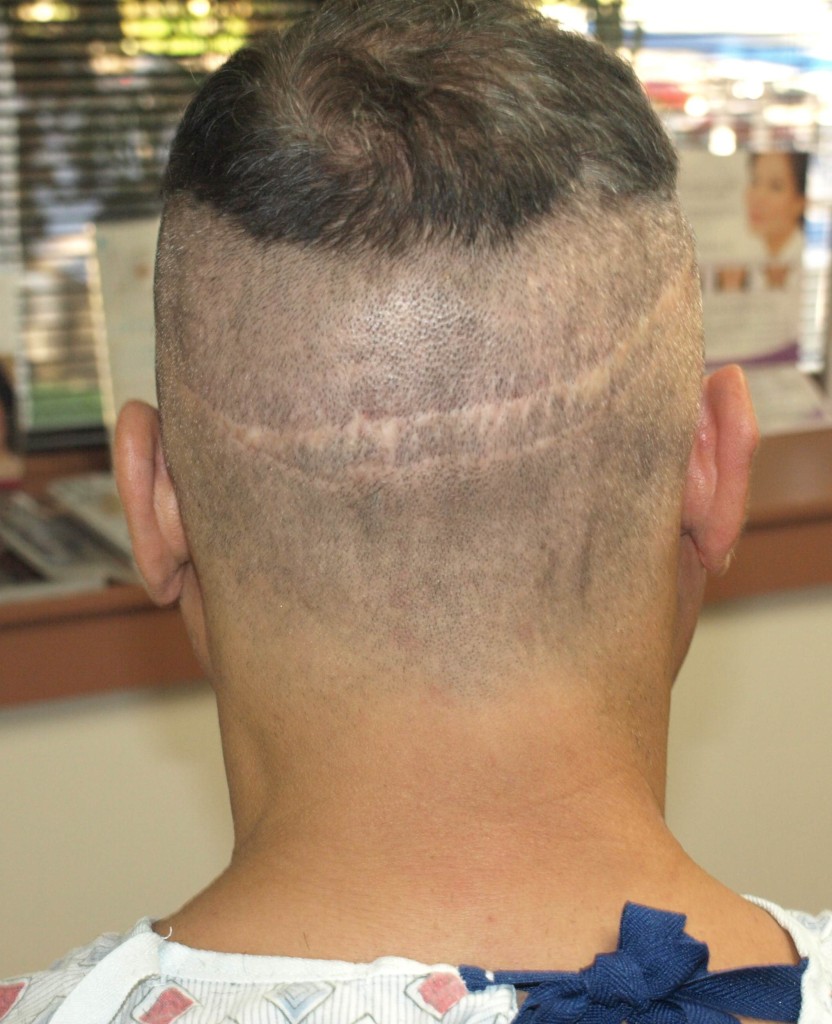FUE Hair Restoration
What sets Dr. David of San Diego apart from the competition are his high standards, attention to detail, and his desire to restore your confidence! At your consultation, we will carefully discuss your options and expected results. You will receive information about propecia, platelet rich plasma (PRP), and other trusted ancillary treatments.
Background: Types of Hair Transplant
Hair transplant has evolved tremendously since the early days of “plugs.” Modern hair transplant is based on the concept of follicular units: that hairs grow in natural clusters of one to four hairs, and they should be transplanted as intact units- and not as much larger plugs. In hairlines, single hair grafts are most common, with the follicular units getting larger toward the midscalp and crown. Occasionally, multi-unit grafts or “di-follicular” or “multi-follicular” units may be used.
The second method of follicular harvesting is FUE or follicular unit extraction, introduced in the late 90’s. This involves removing the individual follicles one at a time from the occipital region. This method has historically been very time consuming, as only one person can be extracting at a given time. The benefit, however, is no linear scar, no stitches, and minimal to no pain following surgery.
Robotic hair restoration, (Artas®) utilized in our practice automates the FUE process, making it much quicker and more effective. Just as important, this makes the FUE procedure more affordable for patients (FUE is generally more expensive than strip transplant). Today, automated FUE is the most advanced method of hair restoration.
Why FUE Hair Transplant Surgery in San Diego?
The advantages of working with a board certified, fellowship trained facial plastic surgeon and hair transplant specialist such as Dr. David are significant. Many hair transplant doctors have no background or training in surgery, let alone cosmetic surgery. While the FUE technology helps to make this procedure minimally invasive, it still requires an artistic eye and a respect for scalp anatomy. Trust your face to a Facial Plastic Surgeon and certified FUE specialist!
What sets Dr. David of San Diego apart from the competition are his high standards, attention to detail, and his desire to restore your confidence!

The Advantages
With Artas® Robotic Hair Restoration, we have taken the benefits of the FUE method and have automated the technique. ARTAS® Robotic Hair Transplantation technology offers the most advanced and fastest FUE treatment available. This groundbreaking robotic procedure virtually eliminates human error as it harvests and grafts new hair follicles into thinning or balding areas with an automated system.
The benefits of the Artas® Robotic Hair Restoration method to the patient are similar to manual FUE: minimal discomfort, no scalpel incision, no sutures, no linear scar, little to no risk of complications, quick recovery time, fewer activity limitations and possibly a more natural looking result than traditional strip methods. However, Artas® brings added precision and speed- which translates to lower cost and outstanding results.
This patient came to us for FUE hair transplant surgery following two previous Strip hair transplants. Note the highly visible, widened scars from those procedures. His FUE procedure via Artas® Robotic Hair Restoration included 2000 grafts and will not leave any visible sign. He told us he was “shocked and amazed” by how much easier the procedure was.

Benefits of FUE Hair Transplant Surgery in San Diego:
- FUE hair transplant is a very safe, minimally invasive, relatively minor procedure
- Minimal bleeding and fewer complications than with the “strip” method
- Procedure is performed with local anesthetic and no intravenous or intra-muscular sedation is required
- Patients experience minimal discomfort, no scalpel incision, no sutures, no linear scar and quick recovery times
- And Many More!
FUE hair transplant surgery is also a useful procedure to fix visible linear scars from previous “strip” surgeries. FUE can be used to ‘fill in’ or camouflage those old scars by transplanting new follicles into the area.
